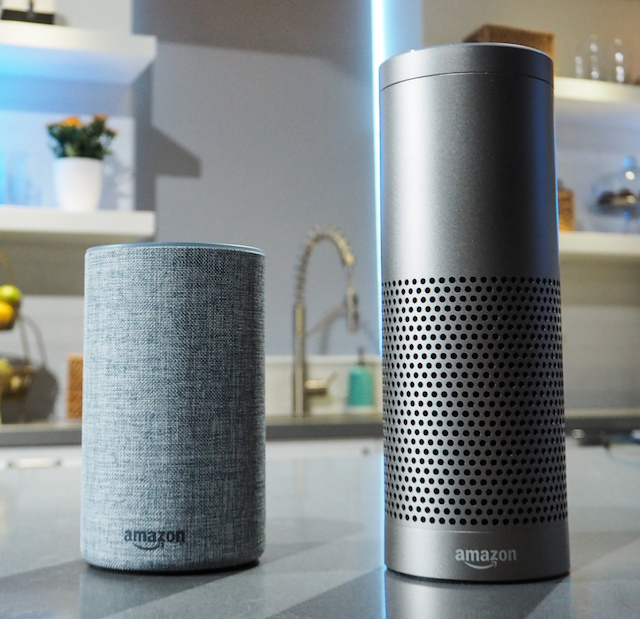What Alexa and iCloud teach us about the power of a hub

Hubs are familiar in some contexts: the center that makes order out of chaos and that serves as the connector orchestrating multiple moving parts. A hub is where "it" all happens.
We have strategically located airline hubs for major airlines in major cities, or networking hubs that connect all computers in a given network. We have the city center farmer’s market as a physical manifestation of a commerce hub, the stock exchange as a hub for global financial transactions, and even Comic-Con serving the needs of all comic book fans in one central location. But there’s a new type of digital hub that has emerged in the Subscription Economy. This new hub is about services, the cloud and, most importantly, subscribers.
Apple’s iCloud is a good example of a subscription hub. In the old world of Apple, you had multiple devices each containing different information and with a different function. To share a downloaded song from your laptop to your iPad, you’d need to connect and sync.
Enter Apple iCloud. With iCloud, all the songs you download, all the movies you purchase, everything is housed in one place which all your devices can access. Note that iCloud is more than just a framework that supports different products. It’s a center point that connects all of a subscriber’s products, data, and services on which Apple can build and support multiple business models and through which subscribers can actively manage their subscriptions.
Amazon’s Echo is another great example of a hub. What started as a smart speaker with a few other bells and whistles, has become a hub that serves as the anchor for connected home services. Echo was first just a platform to serve up customers to Amazon. But it's now become integrated with smart home appliances across brands, connecting products and services from one central location.
So what’s the big deal with these hubs? And why is a hub essential for digital businesses? The short answer is that digital businesses have exponentially more events happening -- and, to manage all these events, you need a hub.
More specifically, subscription businesses need a hub that houses and connects all key subscription information around the following three components:
- Customer events. In a traditional product-centric business, you only interact with your customers when they purchase your product. With subscriptions, there are many possible interactions: sign-up, usage, upgrade, downgrade, pausing a subscription, adding seats, provisioning a cloud service, etc. It’s not efficient to track all these events in different systems. You need to house all customer events in one location.
- Pricing. In the "old world", pricing for something essentially meant one dollar amount for one SKU. In the Subscription Economy, there are many different levers you can push and pull to strategically design pricing. You can use advanced consumption-based charge models such as volume pricing, tiered pricing, usage-based charges for overage, discount charges and more. You also have variable "levers" like billing factors, billing frequency, different currencies, and on and on. With a rigid SKU-based system, the system has to be hacked to manage all this complexity, and it create a mess downstream. Pricing in a central place gives you the flexibility and agility to design pricing as you wish and then communicate that to all impacted systems.
- Metrics. Metrics in a product-centric business are fundamentally different from those measured by a subscription business. With products, you care about how many units you built, cost per unit, cost for building X number of units, how many sold, for what revenue, and what’s the profit. What you’re optimizing for is product sales. Subscription businesses, on the other hand, optimize for customer longevity. All the metrics we look at in a subscription business are wrapped around the customer, things like monthly recurring revenue, customer lifetime value, net retention, churn, total bookings. Success is measured around how many customers you can acquire and keep -- but these numbers are difficult to capture with disparate systems. Instead you need one system that houses all customer information to accurately track these metrics.
For a subscription business you have a CRM at one end but that only keeps track of sales information. At the other end, you have an ERP, built to hold financial ledgers. This linear set-up can work if you’re just selling products...but not with subscriptions.
Subscriptions aren’t linear. They’re circular, with all relevant activities radiating out from a common center: the subscriber. You don’t just go from customer order to cash on a balance sheet. It’s an ongoing dynamic cycle of actions: quote, order, provision, invoice, collect, recognize, measure, renew, upgrade, downgrade, and more.
And to manage that, you need a hub that connects customer events, pricing, and metrics from sales through financial reporting and downstream to billing, revenue recognition, and beyond. You need a hub that houses and manages all the key subscription information in one central location and that every other system can connect to and take advantage of.
It’s not an overstatement to say that with a subscription business model, everything changes. And these changes require a new way to manage your business, to centralize information and operations across systems, providing modern businesses with a unified view across the entire enterprise.
Makes sense that a circular business model needs a (circular) hub and spoke model, right?
A hub isn’t a line that connects point A to point B. It’s the dynamic core of your subscription business. And if you don’t have one, you need one.
 Tom Krackeler is Senior Vice President of Products at Zuora where he leads the strategy for the Zuora subscription order-to-cash solutions. Tom joined Zuora in May 2015 following the acquisition of Frontleaf where he was founder and CEO. Prior to Zuora, Tom was Vice President and GM at Convio, playing a key role in the company’s 2010 IPO. Tom led Product Development and created the Convio Common Ground product line, where he was also responsible for go-to-market and services. Before Convio, Tom spent 7 years as Co-Founder and SVP Products at GetActive Software, which pioneered online fundraising and constituent engagement for charities and nonprofits. Connect with him at LinkedIn or Twitter.
Tom Krackeler is Senior Vice President of Products at Zuora where he leads the strategy for the Zuora subscription order-to-cash solutions. Tom joined Zuora in May 2015 following the acquisition of Frontleaf where he was founder and CEO. Prior to Zuora, Tom was Vice President and GM at Convio, playing a key role in the company’s 2010 IPO. Tom led Product Development and created the Convio Common Ground product line, where he was also responsible for go-to-market and services. Before Convio, Tom spent 7 years as Co-Founder and SVP Products at GetActive Software, which pioneered online fundraising and constituent engagement for charities and nonprofits. Connect with him at LinkedIn or Twitter.
